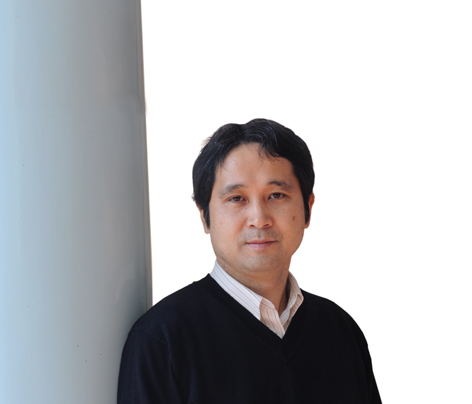At the beginning of 2006, Dr. Jun (Yona) Miyamoto immigrated to Israel with his aging cat, Sean. After spending several months learning Hebrew in Jerusalem, he moved to Rehovot through a special program for new immigrant scientists and began to work in the lab of Prof. Amos Breskin of the Particle Physics Department.
Miyamoto's story is one of an ongoing attempt to build bridges between things that often seem to be light years apart: culture, religion, science and identity. The 40-year-old Miyamoto grew up in a rural area in Tokushima, near Osaka. His parents were both teachers: His father taught English and his mother kindergarten. "As a child, I loved foreign languages and geography, and, of course, science. But religion was never discussed. Holidays were about tradition, and there is no institution of communal prayer in Japan. As I grew up, I became curious about religion. At 17, I left Japan for the U.S., which I still think of as my second home."
Miyamoto received his Ph.D. from the University of Michigan, where he worked on particle detectors. During his studies, he also managed to travel around the world. His M.Sc. is from the University of California at Berkeley, and this is where he first became interested in Judaism. "I met Yona, a religious Jew who was physically handicapped from birth, in the dorm cafeteria. We became good friends, and this eventually led to my becoming his helper, assisting him with things he couldn't do on his own. I was happy to help, and the two of us often engaged in intellectual and philosophical discussions. He took me to his mother's house near the Berkeley campus on the holidays and to the synagogue as well. I fell in love with the warmth of the Jewish community and with their sense of humor."
At first Miyamoto was interested in the people he met, but after a while he found himself drawn to the religion, as well. He read many books on Judaism and eventually underwent religious conversion in Canada in 2005. Today an Orthodox Jew, he has even learned to cook "Jewish" food, including gefilte fish, knaidelach, kugel and tzimmes. There have been challenges, as well – finding a place of worship where he feels comfortable, for instance, or submitting to the inspections of Orthodox matchmakers.
At the Institute, he participates in the development of novel radiation detectors. These so-called THGEM hole-multipliers, when coated with photosensitive materials, become highly sensitive light detectors. They are developed for measuring light emitted within large volumes of ultra-pure gas following rare interactions with certain cosmic particles – at this point theoretical – which are promising candidates for the mysterious dark matter that is thought to comprise 75% of our universe. To spot these particles, the detectors must be insensitive to cosmic and environmental background radiation; Miyamoto is investigating ways to create these conditions.
Miyamoto concedes that Judaism is not a religion for those seeking a simpler life or easy answers. "In general, there are more questions than answers, as well as added responsibility and obligations. As I get deeper into the world of particle physics, I want to find ways to integrate my faith with my profession."
Prof. Amos Breskin's research is supported by the Helen and Martin Kimmel Center for Archaeological Science. Prof. Breskin is the incumbent of the Walter P. Reuther Chair of Research in Peaceful Uses of Atomic Energy.
